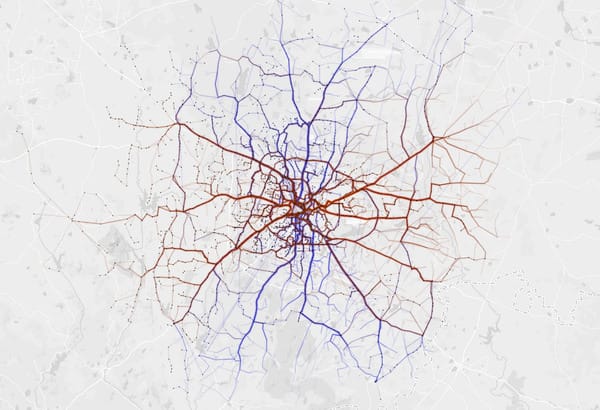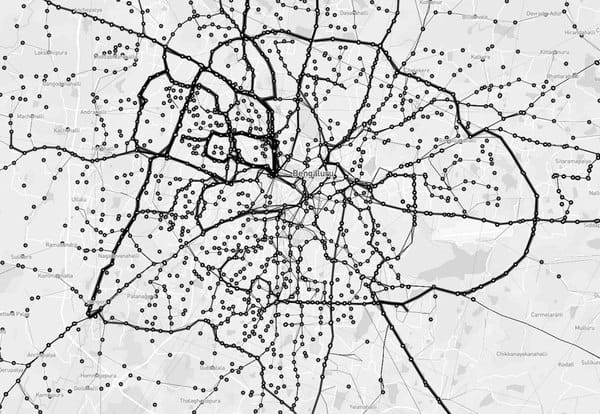Coffee: Rs.12, bus fare to the coffee store < 1km away: Rs.5 each way. On a hot day like today, count on us and you won’t miss your coffee.
— BMTC (@BMTC_Bangalore) May 26, 2017
Finally Bengaluru Metropolitan Transport Corporation (BMTC) is doing everything it can, to show citizens in Bengaluru that they really care about the city transport. New buses, free wifi in non-AC buses, reduced fare and double-decker buses are only a few of the measures.
The recently concluded GovJam event is an example of BMTC’s proactive approach to the citizen participation model that’s becoming popular in Bengaluru. Different teams like Team Ice cream, Bengaluru- Bus Pravas, Yuva, First Day, First Pass got together and brainstormed on the ideas to make transport in Bengaluru better, at the GovJam event. Many ideas were presented in the form of powerpoint presentations and videos, which will be considered by the BMTC in future improvements.
BMTC is also seeking acknowledgment of citizens for the new measures taken, on social media. The active Twitter account puts out crucial information that needs to reach public almost every other day.
But all these measures sound hollow when we see the actual functioning of the department. We wrote about BMTC’s Intelligent Transport System which could have helped many commuters but hasn’t been able to make a remarkable impact yet. There are many issues like this, which need to be focused on, not only by the BMTC but also by all concerned departments.
Drama behind ‘Stage Carriage licence’
The Karnataka government’s Transport Department had stopped app-based aggregators like Ola and ZipGo from operating shuttle services, because they had only Contract Carriage license. The Regional Transport Offices refused to give Stage Carriage license to any of the private vehicles. As a result, app-based aggregators could not run their promised shuttle services. Thus BMTC’s competition was effectively killed.

A private bus plying on Dr Ambedkar Road in Bengaluru. Pic: Shree D N
Or we only thought so. The reality is that, even today, Bengaluru’s roads see a number of private buses plying illegally to areas like Sarjapur, Doddaballapur etc, from K R Market area. One can also see college buses making extra money in free time, by carrying passengers when there are no students in the bus.
This is not possible without the support of the ‘system’ – obviously a part of the collection will make its way to the ‘concerned’ officials who would ensure that this type of economy survives. So what was the point behind banning shuttle services?
But there is news. The BMTC is reportedly planning to invite private players to ply buses on identified routes. For this to happen, the Transport Department needs to give them the official Stage Carriage license. Probably this could be a step in right direction, to curb the illegalities and legalise the private players.
But will this help the traffic situation and connectivity issues? This remains to be seen, because no private player would want to run an almost empty bus on specified routes, just to provide last minute connectivity to people.
New buses for whom?
BMTC is actually buying new buses. What is happening to them?
Chief Minister Siddaramaiah said in the state budget that he will allocate 3000 buses for BMTC. That should take the total number of buses to beyond 9,000, as BMTC already has 6,251 buses.
But now, only 1,658 buses will be bought, while 1,000 of the old buses will be phased out. So effectively, there will only be about 650 news buses. Some of these buses also will be taken for chartered services, to ferry corporate employees. According to a report from The Hindu, currently about 250 buses run on a dedicated system and 200 buses are offered as chartered services with concessional fares.
With increased fleet, if BMTC increases corporate schemes and buses meant for them, it is not going to help solve the traffic and connectivity issues in the city.
BMTC boasts of covering the city, but no coverage on ground
With the following tweet, BMTC boasts of covering all corners of the city.
BMTC is truly committed to bringing Bengaluru to your doorstep.Plz check our coverage in the map below(lines in blue color) @blrcitytraffic pic.twitter.com/BYQMhzfrt9
— BMTC (@BMTC_Bangalore) May 21, 2017
But coverage by BMTC on paper, without frequency during useful hours is of no use to commuters. Visualisations done using BMTC’s own data, in February 2016 by Sajjad Anwar, an IT professional who is a part of Datameet community, show that the Eastern part of the city has less frequency of buses, though there is coverage.

Coverage of BMTC buses for Bengaluru. Visualisation: Sajjad Anwar / Datameet.

Frequency of BMTC buses for Bengaluru. Visualisation: Sajjad Anwar / Datameet.
Sarjapur Road usually sees many dedicated BMTC buses ferrying corporate employees on the special chartered service. Then there are also many private buses illegally operating from Sarjapur to K R Market, ferrying ordinary passengers, who would go for BMTC buses if there is availability. The red board BMTC buses are usually crowded. Many routes like G-7 and K-5 that cover this route are not seen on road during peak periods of the day.
This means there is a lot more scope for BMTC buses in this route, that connects Sarjapur Road and Outer Ring Road to the city center. The timing needs to be improved too. BMTC should actually check how many buses are needed on Outer Ring Road or any other part of the city, and bring in the required routes and schedules for those routes.
Introducing and improving feeder services
There have been new midi buses, of shorter length and less seats, now operating in areas like Malleshwaram.
Over the last few weeks BMTC has introduced new midi buses in the western part of the city @RLR_BTM @CMofKarnataka @blrcitytraffic pic.twitter.com/pm6SkGVh4q
— BMTC (@BMTC_Bangalore) May 20, 2017
Many bus users and public have hailed this step. These buses are ideal for looped feeder services (Chakra services) in areas around Metro stations. With phase I of Metro nearing completion and more areas looking for feeder services to reach Metro stations, Bengaluru will need more such buses in future.
There are citizen-participation initiatives to come up with feeder bus plans that are taking place across the city. Providing right mix of transport for all areas in the city including areas not covered by Metro will help the city in long run. Data can play a big role here: the congestion data, data on commuting pattern, data on peak traffic and needs – there is a lot that can be done, but that’s not happening, as explained in this article on BMTC ITS.
BMTC has won record number of awards, but Bengaluru hasn’t yet seen the real impact of its services. Can we hope that BMTC gets its act together to become smart and gains popularity again, by actually helping the citizens?
Related Articles
BMTC’s new year gift to Bengaluru: Intelligent Transport System
All you need to know about BMTC’s Intelligent Transport System
One year later, BMTC’s updated ITS continues to disappoint
This article will be a lot nicer to read if the visualization plots by Sajjad Anwar are better explained in the text or captions. One is not sure how to interpret the visualization,